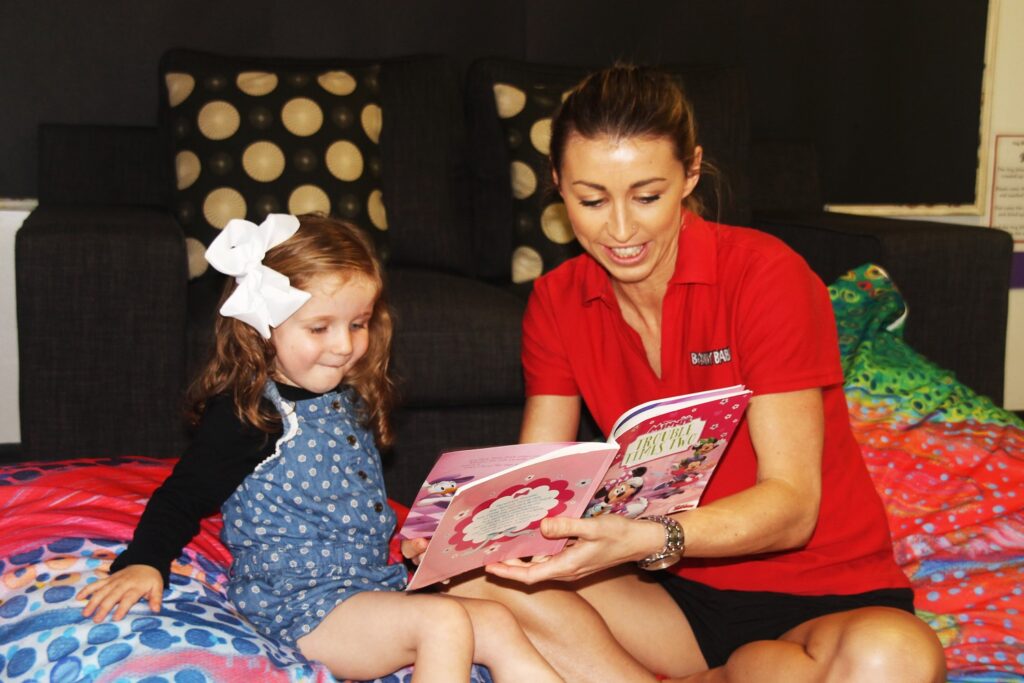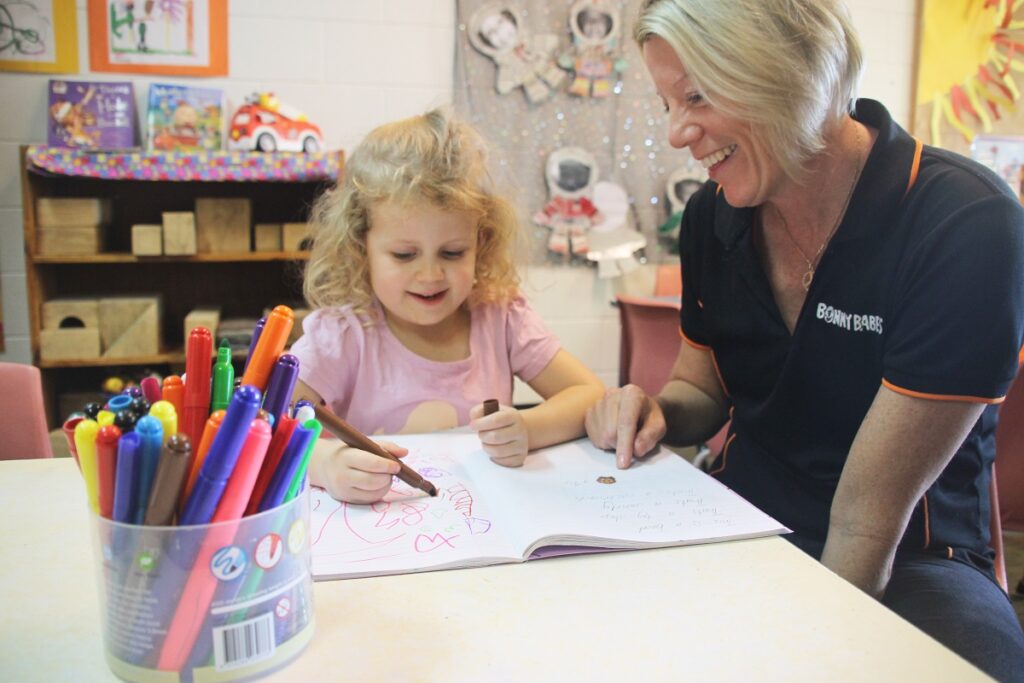
Literacy activities for children
A child’s journey towards literacy involves learning to speak, listen, read, understand, watch, draw and write. The foundation for building these skills begins at birth. Here are some literacy activities to get you and your child started.
About literacy activities
Talking, singing, playing sound and word games, reading, writing and drawing with your child are great ways to set up a good literacy foundation.
The great news is that everyday activities, like going to the local shops or library, all offer lots of fun opportunities for literacy development.
And you don’t need lots of time for literacy activities – five minutes a few times a day is often enough. The key is to use different times and opportunities to help your child learn. It can be as simple as writing a shopping list, playing a rhyming game or reading a story before bed.
It’s never too early to start getting your child involved with literacy activities – even babies enjoy listening to stories and being part of conversations.
Babies, toddlers and preschoolers: literacy activities
Talking and singing activities
Talking and singing with young children helps them to develop listening and speaking skills. Here are some ideas to get you started:
- Use rhyme whenever you can. Use phrases like ‘snug as a bug in a rug’ or make up nonsense rhymes about things you’re doing – for example, ‘putting fish in the cat’s dish’.
- Sing nursery rhymes with your child. Nursery rhymes teach your child language, rhyme, repetition and rhythm. You could try ‘Baa baa black sheep’, ‘Miss Polly had a dolly’ or the ‘Alphabet song’.
- Repeat sounds your child makes, or make up sounds and see whether your child can copy them. For example, ‘Cows say moo. Can you say moo?’
- At mealtimes, talk about the food you’re preparing, what you’re doing to it, how it tastes and what it looks like.
- Talk about objects outside the house – for example, the rustling of leaves, or the sounds of the birds or traffic. Ask your child if she can make the sounds for wind, rain, water, airplanes, trains and cars.
- Play games like ‘I spy’ using colours. This can be lots of fun, especially for preschoolers. For example, ‘I spy with my little eye, something that’s green. What’s something green I might be looking at?’.
Reading and book-based activities
Reading with children develops their vocabulary, ability to listen and understand, and ability to connect sound and words. Your child might like these activities:
- Try books with rhyme, rhythm and repetition. Many children enjoy books by Dr Seuss and Pamela Allen – for example, The cat in the hat or Doodledum dancing.
- Encourage your child to turn the pages and talk about what he sees. Use your finger to guide your child’s eyes from left to right across the page as you read, and point out certain words or phrases.
- Choose lift-the-flap books or touch-and-feel books. You could even make your own book with objects your child likes to look at and touch.
- Encourage your child to take the lead with reading – for example, ‘Where do we start from?’ Every so often, stop reading and ask your child what she thinks will happen next.
- Link books with real life. For example, if you’ve read a book about playing in a park, you might like to take your child to the local park and point out swings that look like the ones in the book.
- Encourage your child to act out the story that you’re reading. For example, you can ask your child to hop like the kangaroo in the book.
Follow your child’s lead with reading – encourage him, but don’t push him. Experiment with different books to see what he likes, and just have fun!
Drawing and writing literacy activities
Scribbling and drawing help young children develop fine motor skills for writing with pencils and pens later in childhood. Here are some activities to try:
- Encourage your child to draw and write using pens, pencils, crayons and markers. She’ll probably be excited to add a scribble or drawing on birthday cards or letters in a big swirl of colour.
- Encourage your child to try some letters or write his name on all the artwork he creates. You can write out letters in one colour and ask your child to trace them in another colour.
- Help your child use playdough to make the letters of the alphabet or numbers.
- Give your child opportunities to use letters of the alphabet in different forms – on blocks, magnetic letters that stick on the fridge, and puzzle pieces.
- Cut out or draw pictures of basic household items – chair, table, TV, wall, door and so on – then write the items’ names on separate pieces of paper. Ask your child to match the name of the item to the picture.
- Encourage your child to tell you about her drawings and help your child write down the words she uses to describe them.
School-age children: literacy activities
Talking activities
- Play word games that encourage your child to learn sounds. For example, ‘I spy with my little eye something beginning with f-f-f. What do you think I’m looking at that starts with that sound?’.
- Ask your child about words that rhyme. For example, ‘What other words sound like car?’
- Ask your child to make a sound or sound combination, then think of words with that sound. For example, ‘What’s a funny sound? Mo? What sounds can you make with mo? Moan, mope, moat … ’.
- Talk about the past. Ask your child to tell you something he enjoyed doing at school that week.
- Talk about the future. Tell your child what you’re going to do on the next day or on the weekend, or ask her to tell you what she needs to do before she goes to bed.
Reading and book-based activities
- Read stories and then talk about them. Ask, ‘What was that story about?’ or ‘Did you like that character? Why?’
- Take turns reading. You could read half the page while your child reads the other half. You could also point out single words here and there for your child to sound out. Start with words that are easy to sound out – for example, two-letter and three-letter words like ‘mat’, ‘on’ or ‘sip’.
- Older children love alphabet books – ask your child to tell you words that start with the same sound as the letter you’re looking at.
- Ask your child to make a storybook with his own pictures. He can do this on a computer or with pens and paper. Help him write the words or at least some of the letters in the story.
- When you’re out and about, ask your child to pick out or sound out letters or words on billboards, shop fronts, street signs or items at the supermarket.
- Visit the library with your child, and encourage her to choose books to take home. These could be fiction and non-fiction books. Many libraries also have story sessions and book clubs for children.

Drawing and writing literacy activities
- Select a few alphabet letters and move them around to make new sounds – bat, tab, abt – and see which of them are real words. Practise sounding them out letter by letter, then saying the word – for example, ‘b-a-t makes the word bat’. Start with lower-case letters, so you don’t confuse your child with the two different letter shapes for each sound.
- Encourage your child to write his name and the names of other family members in greeting cards or on pictures. Once your child can use all the letters well, he’ll be ready for upper case and lower case (capitals and small letters).
- Encourage your child to write shopping lists or restaurant menus for pretend play.
- Point out different types of print when you’re out and about with your child – for example, on shop signs or movie posters.
- Ask your child to make you a book, with a word on one side of the page, and a picture of that word on the other side.
Article sourced from the Raising Children Network


